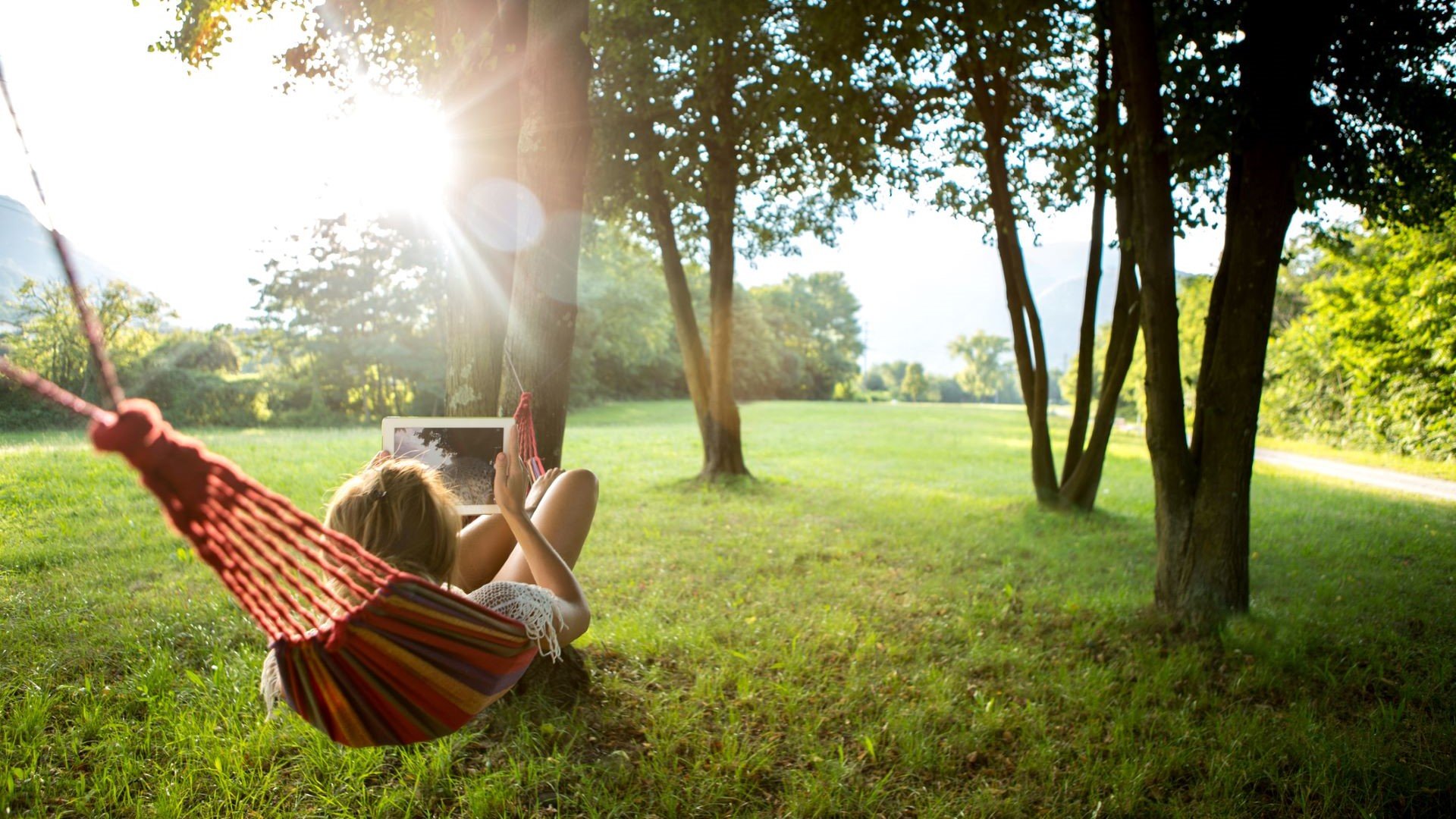Use Hammocks Safely to Help Prevent Injury

Hammocks on K-12 school, college, and university campuses provide a relaxing break. But these implements of tranquility can cause injuries. Although most hammock accidents are minor, like falling out of a hammock onto soft grass, improper hammock use can cause serious injury and even death.
Help Prevent Hammock Injuries
Consider taking these steps to help prevent injuries:
Don’t leave freestanding or unsecured poles, posts, or columns on campus.
A common theme in serious hammock injuries is the user attaching the hammock to a structure that appears sound but isn’t. When parts of a structure are removed or decay and can’t be repaired, remove the whole structure. Don’t leave sections that may appear sturdy but are no longer supported by the rest of the structure.
Remove sick or damaged trees.
To prevent students hanging hammocks from damaged trees that could break or fall, establish a regular tree inspection schedule and remove damaged trees. Review Adopt Tree Assessment and Removal Policies and Practices.
Establish rules.
Identify where you allow and prohibit hammock use. Limit use to one person at a time. Prohibit tying multiple hammocks to the same support, such as a pillar or a tree, at the same time. Other rules may include:
- Only place hammocks over soft ground.
- Use solid ties or straps to secure the hammock to a structure.
- Only tie hammocks to secure structures.
- Prohibit hammock use over concrete or water.
- Prohibit standing on the hammock.
- Remove hammocks when they’re not being used.
- Ensure hammocks are at a safe height. Don’t allow the center of hammocks to be more than 4 feet above ground. (Limit a hammock’s height to 2 feet above ground at K-12 schools.)
- Require adult supervision when hanging and using hammocks at K-12 schools.
Consider whether full hammock prohibition may be appropriate for your campus.
Post signage.
In areas frequently used to hang hammocks, post signage indicating the rules of use. See Good Signage = Good Risk Management for additional signage considerations. Use “No Hammocks Allowed” signs in locations where hammock use might be tempting but is prohibited.
Ensure rules and signage are parallel across similar activities, like slacklining.
Any activity where the user hangs something expected to hold their weight between two structures should have the same standards. For example, if your school prohibits slacklining, the sport of balancing on a piece of fabric suspended above the ground, on certain campus structures, you also should prohibit hammock use on those structures.
Test school hammocks for safety.
School-installed hammocks can help provide a safer option, but even expensive hammocks with solid structures can have design flaws. Common design flaws that can cause injury include:
- Users can’t exit the hammock without falling because the weight distribution or height doesn’t let users place their feet on the ground and stand.
- Surface under the hammock is hard, uneven, or jagged, creating a greater opportunity to injure someone who falls out.
- The stand is unsteady when a user rocks the hammock, creating the possibility that the stand may collapse with heavy use.
Test new hammocks for these common safety issues. Don’t install — or, after testing, make sure to remove — hammocks that are more likely to cause injury.
Research new hammocks you acquire to ensure they haven’t been recalled.
Review campus hammock use annually.
As part of an annual campus review, such as an annual flooring and walkway review, investigate and take action regarding campus hammock use.
- Assign someone to visually review the campus and identify anywhere hammocks (including school-installed hammocks) are or could be used.
- Inspect school-installed hammocks for signs of wear including holes or fraying.
- Consult with representatives from your Risk Management, Facilities, and Campus Security departments to learn of any regular hammock practices, reports of improper use, and injuries.
- Use this data to update your institution’s hammock rules and signage.
- Fix or remove any damaged institution-installed hammocks.
Additional Resources
University of Colorado Boulder: Hammocks Policy
Hammock Universe: Hammock Safety Tips for Children and Parents
About the Author
-

Melanie Bennett, Esq., ARM-E
Senior Risk Management Counsel
In her role on UE’s Risk Research team, Melanie dives into timely topics affecting education. Her areas of expertise include protecting minors, enterprise risk management (ERM), technology accessibility, and athletics. Prior to joining UE, she interned at the U.S. Department of Education’s Office for Civil Rights. Melanie serves on the Higher Education Protection Network’s (HEPNet’s) Board of Directors.





